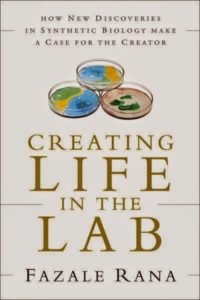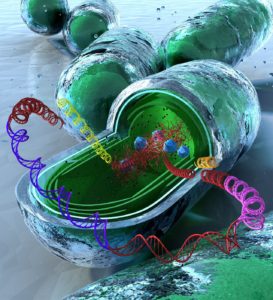Feb
21
Creating Life in the Lab

This month marks 10 years since Fuz Rana’s book, Creating Life in the Lab (2011) was published. I have owned a copy for awhile, of course, but it finally made it to the top of my Read List late last year. It was a little different than I expected, yet I’m not quite sure what I did expect, other than more discussion about computer simulations. There is a bit of overlap with his books Origins of Life and The Cell’s Design, but that was not surprising. In any case, the subject matter was challenging (as usual) but the book was very informative about things like the basic requirements, bottom-up versus top-down approaches, and the intersection between synthetic biology and origin-of-life (OOL) research.
The following is an excerpt from near the end:
“In the effort to account for the origin of cell membranes, origin-of-life researchers have demonstrated that, in principle, physicochemical processes do exist that can (1) generate the building blocks of primitive cell membranes; (2) lead to self-assembly into vesicles; (3) encapsulate information-rich molecules and protometabolic networks; (4) establish transport across the membrane; and (5) produce vesicle growth and division. Some success has been achieved in identifying the mechanistic basis for the different stages of membrane evolution. However, amid all these astounding accomplishments they have failed to show any geochemical relevance.
Each stage of the process from prebiotic amphiphiles to functioning primitive membranes depends heavily on the concentration of the lipids, their exact identity, and environmental conditions (including temperature, pH, and salt levels, among others). If it weren’t for chemists’ diligence in the laboratory, no primitive membrane vesicles would form, encapsulate materials, or grow and divide. If anything, attempts to provide experimental support for the chemical evolution of cell membranes has effectively demonstrated that the work of an intelligent, purposeful agent is required for life’s origin.

In their pursuit to understand life’s genesis, origin-of-life researchers work in tandem with synthetic biologists, particularly with those seeking to engineer life from the bottom up. Some of the prominent figures in origin-of-life research are also investigating questions in synthetic biology. To understand the origin of life, either how it began long ago or how to make it now, researchers go into the lab and manipulate chemicals, attempting to identify chemical reactions and physical mechanisms that can generate life’s building blocks from simple compounds. In turn, they conduct experiments to learn how these building-block materials can assemble into more complex molecules that aggregate and evolve, either on their own or with experimenter help, to form living systems. In a sense, they are doing the same work. They are trying to create (or more appropriately re-create) life in the lab. The only difference: origin-of-life scientists are constrained by the conditions and resources available on the primordial Earth. Synthetic biologists are free to use whatever means they can discover or devise to reach the end goal.
Many origin-of-life researchers express hope that attempts to create artificial life in the lab will provide them with important clues as to how life may have originated. At the same time, many synthetic biologists are starting to apply what they have learned from those studying origin-of-life questions and problems. As origin-of-life scientists discover chemical routes that can yield life’s building blocks and assemble these materials into more complex systems, they can use this knowledge to jump-start the efforts to create artificial life. In effect, the quest for artificial life and the investigation into the origin-of-life question are deeply intertwined endeavors.
It is noteworthy, then, that the conclusion coming from origin-of-life research so closely mirrors the implications of the work taking place in synthetic biology: to generate, sustain, and manipulate a living entity requires the intense involvement of highly intelligent beings. As evolutionary biologist Simon Conway Morris has pointed out, ‘Many of the experiments designed to explain one or other [sic] step in the origin of life are either of tenuous relevance to any believable prebiotic setting or involve an experimental rig in which the hand of the researcher becomes for all intents and purposes the hand of God.'”
That speaks volumes, I think.
Of course, if you’d like more details, you can try searching reasons.org or just read Rana’s book. 🙂















